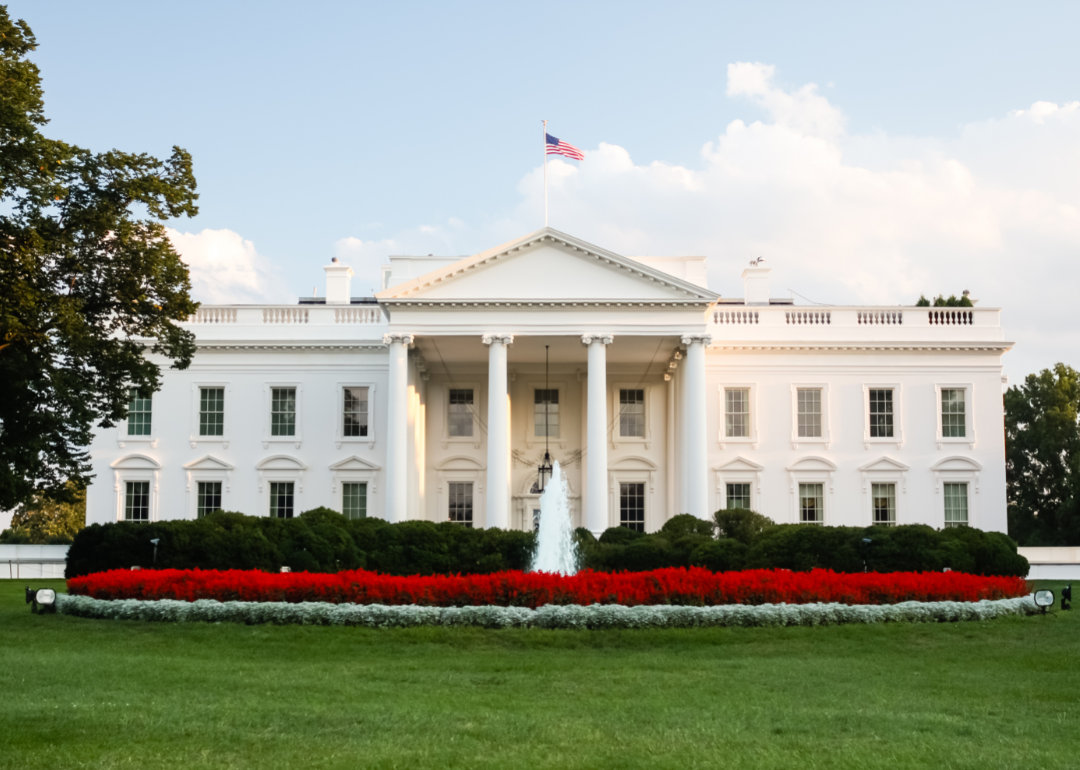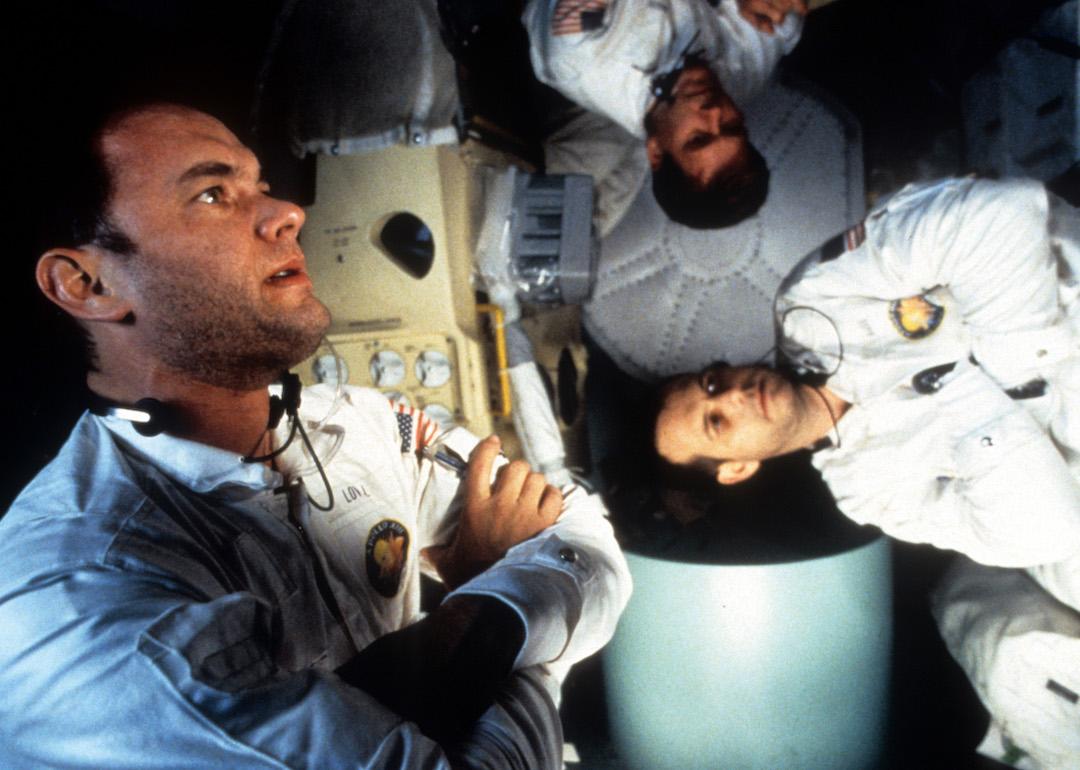
Guide to the US presidential line of succession
Guide to the US presidential line of succession
An outbreak of COVID-19 tore through Washington in the first week of October, reaching all the way up to the president. With a skeleton crew operating out of the White House, multiple politicians, White House staff, and members of the press in quarantine, and an unclear prognosis for just how far-reaching and this outbreak will get, theoretical discussions have bubbled up about the presidential line of succession—and whether those in that line ought to be quarantining out of an abundance of caution.
The framers of the Constitution provided the solution for the what-if scenario in Article 2, Section 1, establishing a line of succession that has been triggered just nine times in history. Although the line of succession falls to 18 people, it has only ever extended as far as the vice president, who is first in line to succeed the president. In total, eight vice presidents have assumed the presidency after the death of a president, while Gerald Ford remains the only vice president to become president following a resignation from office. In 1985, Vice President George H.W. Bush was president for just eight hours while President Ronald Reagan underwent surgery.
Members of Congress and of the president's cabinet are also in the line of succession, but are only eligible for the job if they meet the requirements for the presidency, which stipulate that a person must be at least 35 years old, a natural-born citizen, and a resident of the United States for at least 14 years.
U.S. law considers almost every worst-case scenario, providing for a designated survivor during the president's annual State of the Union address in case calamity were to strike Capitol Hill, and even figuring out what would happen if the president-elect were to die before officially taking office.
Read on to find out who is currently in line to take over as president, and the often-forgotten history behind the particular order.
You may also like: History of political parties in America
#1. Vice president
Article 2 of the U.S. Constitution establishes that if the sitting president is removed from office upon death, resignation, or the inability to serve, the vice president would assume the role of president. Nine vice presidents have ultimately taken on the role of president after a president's death or removal from office, but there wasn't a process for selecting a new vice president under this circumstance until the 25th Amendment was ratified in 1967. Vice President Mike Pence is currently first in line for the presidency if President Donald Trump were to leave office.
#2. Speaker of the house
The 1792 Presidential Succession Act placed the speaker of the house further behind in the line of presidential succession, and the 1886 Presidential Succession Act removed both the speaker of the house and the president pro tempore of the Senate from the line of succession entirely. However, after Harry Truman assumed the presidency following Franklin Roosevelt's death in 1945, he argued that elected officials should be higher in the line than appointed cabinet officials, and a new law was adopted in 1947. Nancy Pelosi, the current speaker of the house, is the only Democrat in the line of presidential succession.
#3. President pro tempore of the senate
Historically, the Senate has elected the most senior member of the majority party as president pro tempore of the Senate, who is charged with presiding over the legislative body in the absence of the vice president. Similar to the speaker of the house, the president pro tempore was removed from the line of succession in 1886, only to be reinstated in 1947. President Harry Truman's decision to put the speaker of the house before the president pro tempore in the line of succession could be due to his friendship at the time with the speaker. The current president pro tempore of the Senate is Sen. Chuck Grassley, R-Iowa.
#4. Secretary of state
Before 1947, the secretary of state was second in line to the presidency after the vice president. One of President Harry Truman's rationales for changing the order of succession was to block a president from being able to handpick his or her own successor, which they could do with the appointment of any cabinet position. If the president were to resign from office—which has only happened once, in the case of Richard Nixon in 1974—the president is required to submit his resignation to the secretary of state. The current secretary of state is Mike Pompeo.
#5. Secretary of the treasury
The order of presidential succession after the vice president and senior members of Congress falls to the president's cabinet members in the order the positions were created. The secretary of the treasury was one of the first positions to be established, with Alexander Hamilton serving as the country's first treasury secretary. Today, Steven Mnuchin is secretary of the treasury, and fifth in line for the presidency.
#6. Secretary of defense
Mark Esper became acting secretary of defense on July 23, 2019. While the secretary of defense is sixth in line for the presidency, it is unclear whether acting cabinet officials are eligible to serve in the line of presidential succession. A number of scholars interpret the Presidential Succession Act to mean that acting cabinet secretaries are eligible for succession so long as they have previously been confirmed by the Senate for a secondary position in their current department, but this point is often disputed, and would likely create a slew of legal challenges if the situation arose.
#7. Attorney general
Attorney General William Barr is responsible for representing the United States in legal matters and offering legal advice to the president, as well as to cabinet officials. The position was created with the passage of the Judiciary Act in 1789, and the attorney general became the head of the Department of Justice in 1870. As attorney general, Barr also oversees the FBI, Drug Enforcement Administration, and the Bureau of Alcohol, Tobacco, Firearms, and Explosives.
#8. Secretary of the interior
Similar to Defense Secretary Patrick Shanahan, the current secretary of the interior—David Bernhardt—holds the position in an acting capacity, meaning that his place in the presidential line of succession is unclear. Bernhardt assumed the role after former Interior Secretary Ryan Zinke resigned on Jan. 2, 2019. However, President Trump has nominated Bernhardt to serve as permanent secretary of the interior, and confirmation by the Senate would cement his place in the line of presidential succession.
#9. Secretary of agriculture
The Department of Agriculture was established in 1862 by President Abraham Lincoln. Sonny Perdue, the current secretary of agriculture, is the 31st person to serve in the role, which is responsible for promoting agriculture production and providing economic opportunities for rural America. Perdue brings his experience as a former farmer to the position, but he was also a state legislator and governor of Georgia.
#10. Secretary of commerce
As the current secretary of commerce, Wilbur Ross is in charge of promoting job creation and economic growth through the enforcement of fair and reciprocal trade. Similar to President Trump, Ross is known for his being a wealthy businessman, and built his career by investing in bankrupt companies in the steel, textile, financial, and auto industries. Ross has also been plagued by a series of scandals during his tenure as commerce secretary, including a 2017 investigation by Forbes magazine, which found that he inflated his net worth to be included in the publication's list of wealthiest people.
#11. Secretary of labor
Eugene Scalia has served as the U.S. Secretary of Labor since Sept. 27, 2019. His duties as secretary of labor include ensuring the welfare of employees, job seekers, and retirees, as well as improving the country's overall working conditions.
#12. Secretary of health and human services
Alex Azar was sworn into the role of secretary of health and human services on Jan. 29, 2018, after serving at the department as both general counsel and deputy secretary under President George W. Bush. Azar has identified four priorities as secretary: the opioid crisis, health insurance reform, drug pricing, and value-based care. The department's role is to protect and enhance the health and well-being of Americans, as well as to foster advances in medicine and public health.
#13. Secretary of housing and urban development
Ben Carson, the secretary of housing and urban development, launched a failed bid for president during the 2016 campaign. The retired neurosurgeon had no experience in housing when he was named to the HUD position; he gained attention as a doctor for separating conjoined twins Benjamin and Patrick Binder in 1987. Carson has said that he intends to return to the private sector after the 2020 election, which would rule him out of the line of succession if President Trump is elected to a second term.
#14. Secretary of transportation
Elaine Chao, the current transportation secretary, is not eligible to serve in the line of succession to the presidency because she is not a natural-born citizen; she was born in Taiwan. Chao immigrated to the United States as a child and spoke no English, but became a U.S. citizen when she was 19. She previously served as labor secretary, and is married to Senate Majority Leader Mitch McConnell, R-Kentucky. In President Trump's current cabinet, the line of succession would skip Chao.
#15. Secretary of energy
In his capacity as secretary of energy, Dan Brouillette is tasked with safe nuclear deterrence and overseeing U.S. energy supply, among numerous other responsibilities. Prior to his current role, Brouillette served as deputy secretary of energy, USAA's senior vice president and head of public policy, and vice president of Ford Motor Company.
#16. Secretary of education
Betsy DeVos is the 11th education secretary, and is responsible for furthering equal opportunities for quality education. She has used her role to advocate for school choice—giving parents the option to choose where their child learns, mostly through vouchers and charter schools—and has supported creating new educational choices in 25 states. DeVos became a controversial nominee after Trump appointed her, and was narrowly confirmed by the Senate. The vote was a tie at 50 to 50, until Vice President Mike Pence cast the tie-breaking vote that assured her cabinet role.
#17. Secretary of veterans affairs
Robert Wilkie, the secretary of veterans affairs, was sworn into office on July 30, 2018, but had also served as acting secretary from March to May of that year following David Shulkin's resignation. The Department of Veterans Affairs is responsible for providing U.S. veterans with benefits and ensuring a high quality of life. Wilkie himself is an officer in the U.S. Air Force Reserve, and previously served in the U.S. Navy Reserve as well.
#18. Secretary of homeland security
Because the secretary of homeland security is the most recently created cabinet position, current Secretary of Homeland Security Chad Wolf is the last person in the line of presidential succession. As secretary, Wolf oversees counterterrorism efforts, cybersecurity, and the enforcement of immigration laws; he is responsible for maintaining the third-largest department of the federal government.



